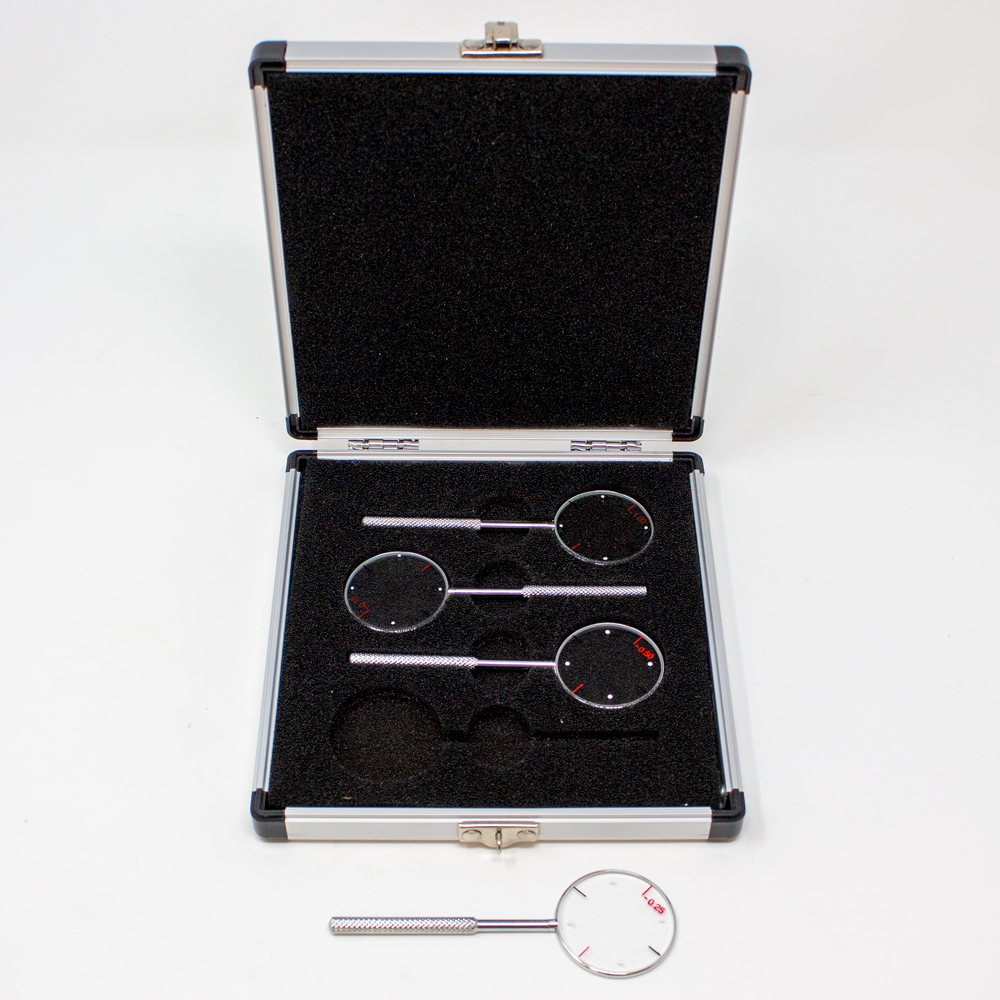Copied from Chat:
For buffy (who reads everything:)
I was at the RVEEH a few days ago for a continuing assessment of the uveitis. Before seeing the ophthalmologist I saw an orthoptist who ran through a series of eye tests, including the use of spectacles with interchangable lenses (phoropter?) to measure things like astigmatism, especially in the eye with severe keratoconus (which is the affected eye.) One of the instruments she used had a handle and three lenses (rough image:)
When the image I saw was relatively sharp, the orthoptist held one of the lenses of this instrument over the lens set, which changed the clarity (sharpness) of the image I saw; sometimes she would rotate the instrument keeping the same lens over the eye, which gave a different compensation. Sometimes the rotation would be about the axis of the length of the instrument (so if the instrument was horizontal as seen in the diagram, it would stay horizontal but I’d see through the lens from the opposite side. Other times she would rotate it so it was now vertical. The sharpness of the image changed by differing amounts in each case.
What’s the instrument called, and how does it work (that is, how can changing the direction of view (back-to-front instead of front-to-back) and the angle the instrument is held change the magnification of the lens?)
——————————————————————————————————————
What you describe sounds like using a crossed cylinder for working out amount and angle of astigmatic correction. But I’ve only ever had crossed cyls with one lens on the stick (mostly I used plus/minus 0.25D. I did have a plus/minus 0.37D too, I think). It’s a pretty old fashioned way of doing it, but sometimes keratoconics are weird to refract. Mostly I plonked a high cyl correction into the phoropter/refractor head and just turned it around until they said “Stop!”. I saw them often…we got good at seat of the pants refraction.
